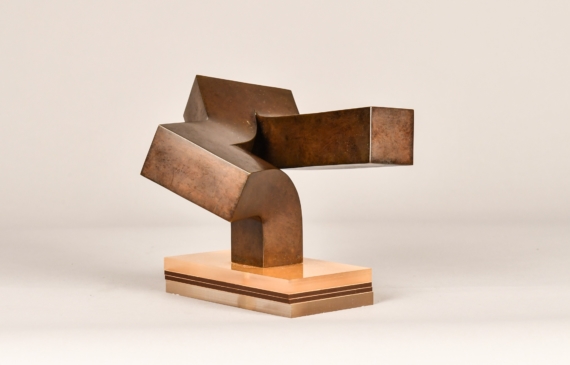
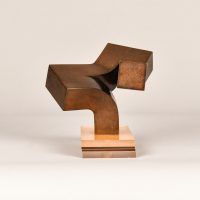

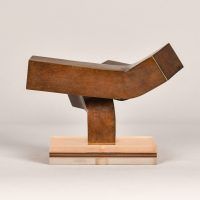
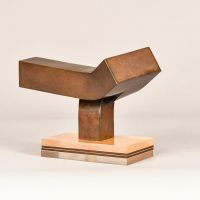
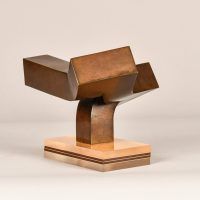


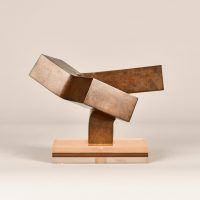
Clement Meadmore
(American, 1929–2005)
Branching Out, 1981
Bronze, brown patina
5 ¼ H. x 8 W. x 6 ½ D. inches
A Melbourne native, Clement Meadmore was exposed to the arts at an early age, with a watercolorist for an uncle and an avid arts fan as a mother. He graduated in 1949 with a degree in aeronautical engineering from the Royal Melbourne Institute of Technology, and went on to design furniture in England until 1953, the year his first welded sculpture was offered for sale. That same year, he traveled across France and Germany, embarking on another excursion in 1959 to Japan. He returned to Australia in 1960 where he earned multiple exhibitions, some of which were solo shows held in Melbourne and Sydney. The artist moved to New York three years later, where he eventually gained U.S. citizenship. For the most part, he remained in New York for the duration of his life.
Meadmore’s sculptures are formed by taking a rectangular shape and transforming it into a multifaceted object by twisting and turning upon itself as if to channel an invisible current of energy. His work has often been placed at the intersection of Minimalism and Abstract Expressionism – the artist, however, resolved to transcend the conventions of Minimalism and arrive at the final composition intuitively, rather than beginning with a preconceived idea that would dictate the end result. He was one of the first sculptors to deal with COR-TEN steel, drawn to it by its rust-like color and place in an industrial context.